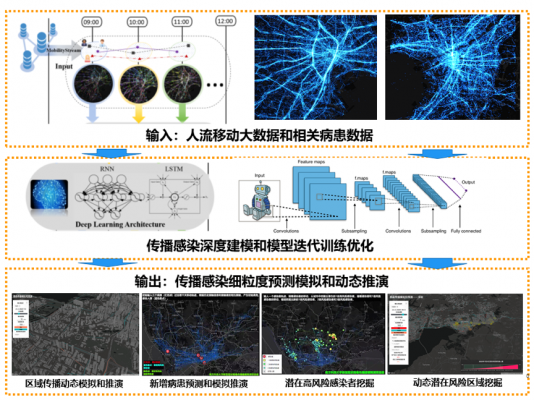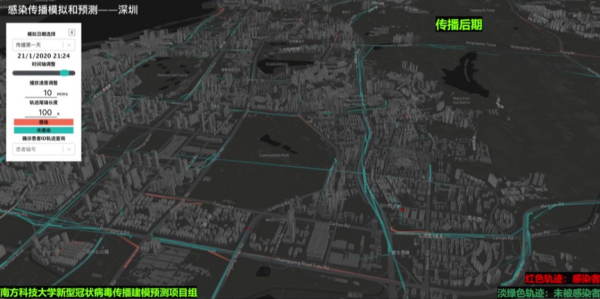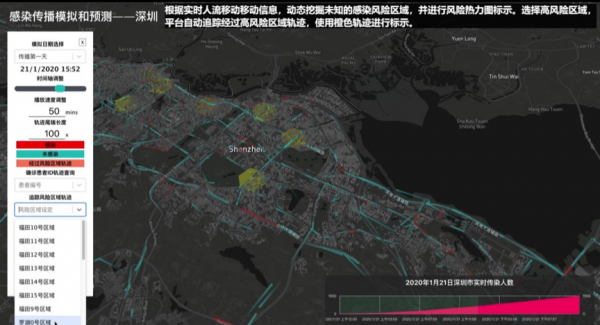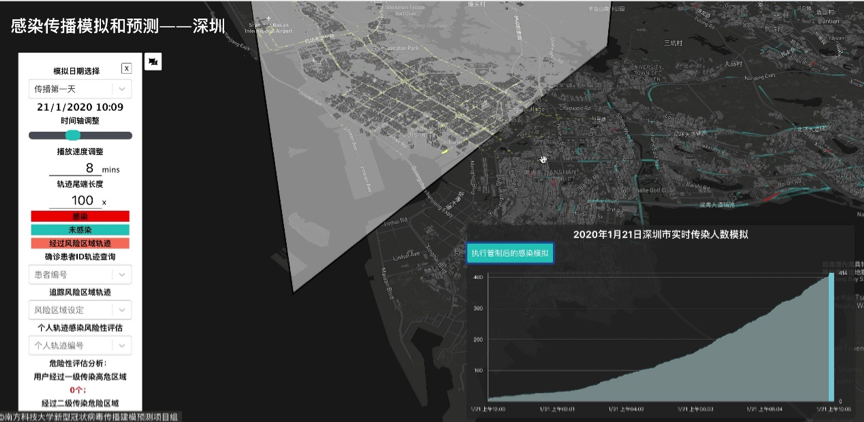The Department of Computer Science and Engineering (CSE) at Southern University of Science and Technology (SUSTech) has recently launched a novel coronavirus (COVID-19) transmission modeling and simulation platform. It can predict city-wide infections based on the movement of people to provide reference points to government departments in the formation of prevention and control policies.
As government departments across China and around the world grapple with the novel coronavirus (COVID-19) and the increased flow of people through transport nodes, the advances made by the CSE researchers significantly improve upon previous models, which used simplistic correlation analysis.

Figure 1: novel coronavirus (COVID-19) transmission modeling prediction and simulation
The Research Office, College of Engineering, and the Department of Computer Science & Engineering collaborated with the SUSTech-UTokyo Joint Research Center on Super Smart Cities to develop the transmission modeling and simulation platform.
The data analysis uses large streams of data to train its predictive and deductive models, thereby allowing machine learning to complete iterative training and accurately understand passenger flows. The quality of the model increases as more data enters the model from the original sources as well as expanding its knowledge base.

Figure 2: dynamic simulation and deduction of infection transmission in local urban areas
The platform can simulate infection patterns at a granular level, which significantly assists policymakers and community leaders to optimize their approach to the prevention and control of the novel coronavirus (COVID-19).

Figure 3: dynamic mining of unknown risk area and warning of risk track
The platform maps the movement of people before determining transit flows and infection probabilities. Algorithms incorporate a series of incubation period and infection vector analysis. The next step is to work backward to find patients that have not yet been diagnosed by following the chain of transmission. The platform also aims to determine at-risk members of the population based on the travels of infected patients and provide early warning to those members of society. The use of big data can help the platform determine patient zero, based on the intersection of different infection vectors.
The multi-functional platform improves the opportunities for community leaders and decision-makers to implement different policies at the municipal and local levels, for a safe and healthy society. For example, local decision-makers can set optimal prevention and control policies based on the transmission within their local community.

Figure 4: setting different regional closure policies by deducing infection vectors
The research team has more than ten years of experience studying human traffic flow through big data analysis and modeling. Their previous experience includes significant Japanese government projects, including the 2011 earthquake and tsunami, as well as assisting the International Telecommunications Union (ITU) in analyzing infection vectors of the Ebola virus in western Africa.
Proofread ByXia Yingying
Photo ByDepartment of Computer Science and Engineering